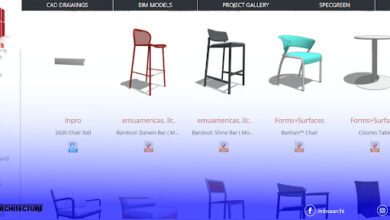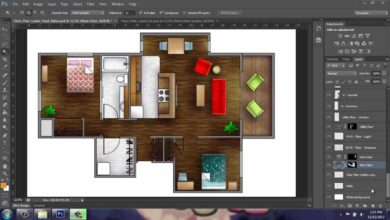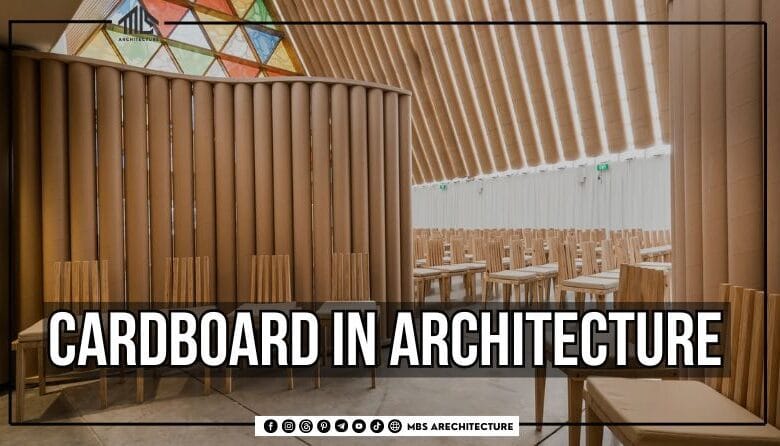
Cardboard: A Sustainable and Innovative Material in Architecture
Cardboard has long been associated with packaging and temporary structures, but innovative minds in architecture are now pushing the boundaries of what this humble material can achieve. It’s being repurposed into a versatile and sustainable building material, proving that even the most mundane materials can take center stage in the push for more eco-friendly construction solutions.
1. The Sustainability of Cardboard
Cardboard is inherently sustainable for several reasons:
![]()
a. Renewable Resource
Cardboard is typically made from wood pulp, a renewable resource, often derived from recycled paper. The process to manufacture cardboard uses less energy and water compared to many traditional building materials such as steel, concrete, or plastic. In this way, cardboard plays a key role in minimizing environmental impact.
b. Low Carbon Footprint
The carbon footprint of cardboard production is significantly lower than materials like cement or metals. From production to transportation, cardboard requires less energy, which means it contributes less to greenhouse gas emissions. It’s also lightweight, reducing transportation costs and energy use, especially when sourced locally.
c. Easily Recyclable
One of the biggest advantages of cardboard is its recyclability. Used cardboard can be recycled multiple times into new cardboard or paper products, reducing the demand for virgin materials. When cardboard is no longer suitable for construction use, it can return to the recycling stream or be composted in some cases, breaking down naturally without polluting the environment.
2. Cardboard and Recycling: Closing the Loop
Cardboard embodies the principles of the circular economy, where products are designed to be reused or recycled at the end of their lifecycle.
- Recycled cardboard can be turned into more cardboard, packaging, or other paper-based products. This makes it an ideal material for projects that prioritize low-waste construction.
- Additionally, cardboard can be combined with other recycled materials (like plastics or natural fibers) to enhance its durability for more permanent construction applications.
Cardboard is a fantastic example of a closed-loop system, where the waste produced from one cycle of use can be transformed into a new resource for another.
3. Architects Who Pioneered Cardboard Architecture
a. Shigeru Ban: A Pioneer in Cardboard Architecture
One of the most famous architects to incorporate cardboard into his designs is Shigeru Ban, a Japanese architect known for his innovative use of unconventional materials. Ban has extensively used cardboard tubes—called paper tubes in his designs, showcasing their structural strength and versatility.
Shigeru Ban is celebrated for creating temporary shelters and disaster relief structures using cardboard. His projects demonstrate that cardboard, when properly designed and engineered, can be both durable and sustainable. Here are a few of his notable projects:
- Paper Church (Kobe, Japan, 1995): After the devastating 1995 earthquake in Kobe, Shigeru Ban designed a temporary church using cardboard tubes. Despite its lightweight nature, the structure was resilient and stood for several years before being relocated to Taiwan.
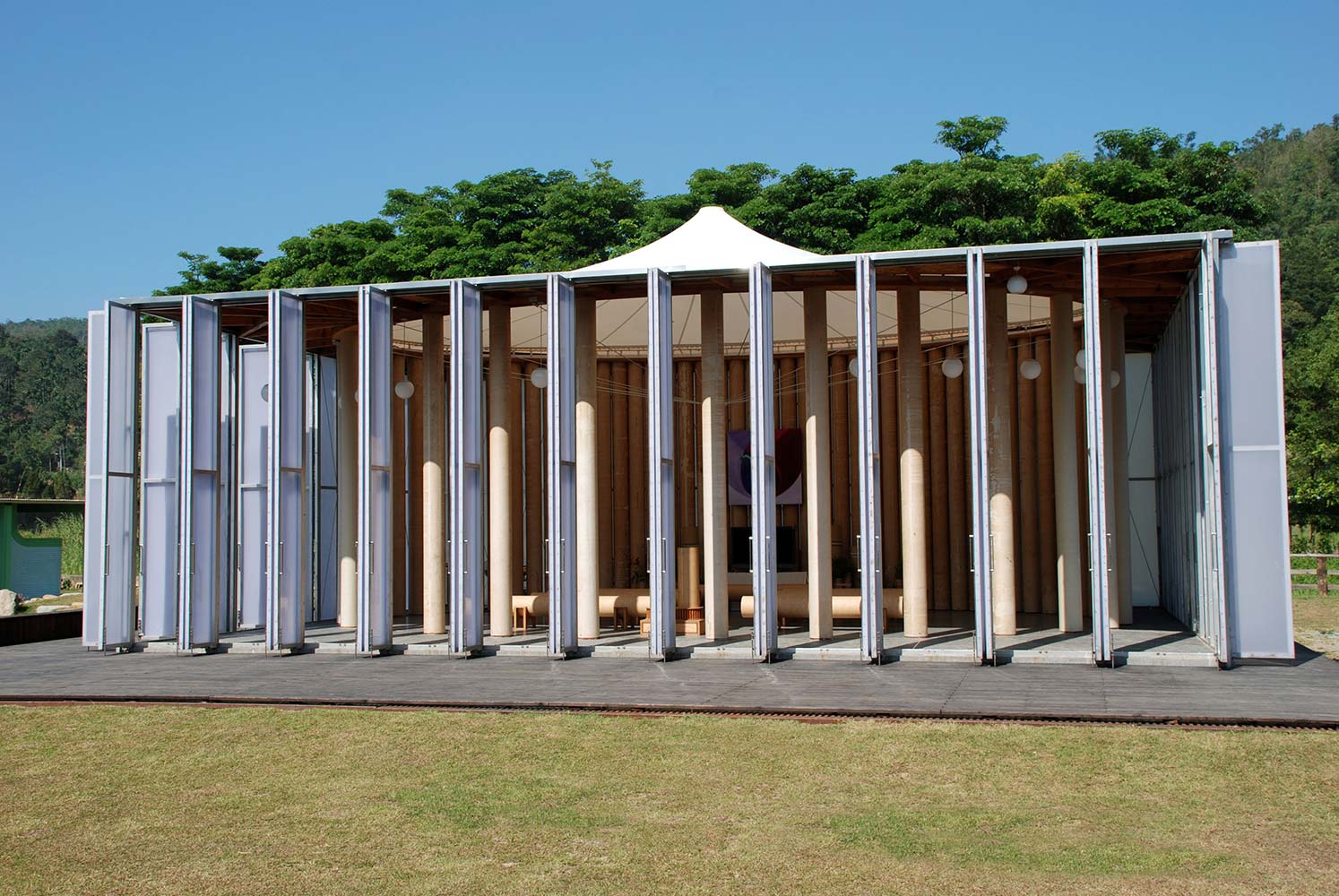
- Cardboard Cathedral (Christchurch, New Zealand, 2013): After an earthquake destroyed the Christchurch Cathedral, Ban was commissioned to design a temporary replacement. The Cardboard Cathedral, made of 98 cardboard tubes, is a testament to how cardboard can be used for both aesthetic appeal and structural integrity.
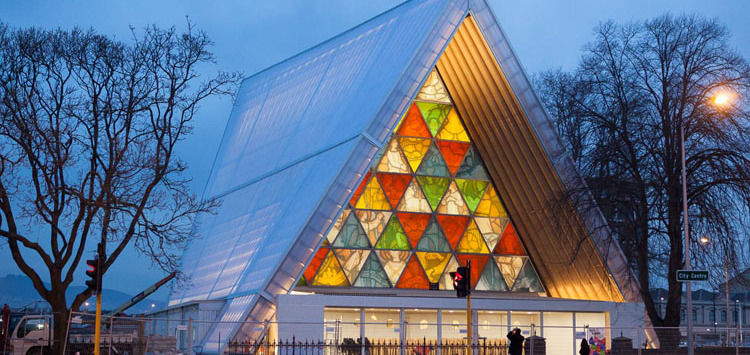
Ban’s work has shown the world that cardboard can be much more than just a temporary material—it can be part of permanent, meaningful architecture.
b. Other Notable Architects Using Cardboard
- Frank Gehry, one of the most famous architects in the world, also experimented with cardboard. He designed the Wiggle Chair (1972), made entirely from layered corrugated cardboard. While not used in building structures, this chair became iconic for showing how cardboard could be used in furniture design, highlighting its durability and aesthetic potential.
- Alejandro Aravena, a Chilean architect known for his socially-conscious work, has also explored the use of recycled cardboard in prototype housing for affordable, low-impact homes.
4. How Cardboard Can Be Used in Architecture
Cardboard’s potential in architecture is vast, from temporary installations to permanent structures. Here are a few innovative ways architects and designers are using this material:
a. Temporary Pavilions and Shelters
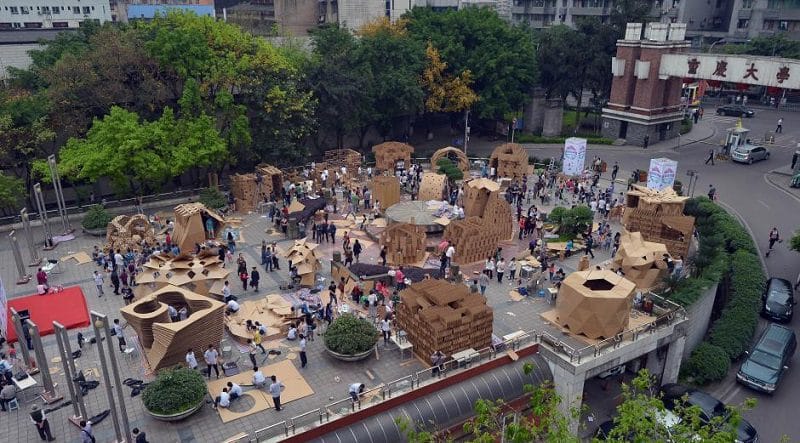
Cardboard is often used for temporary structures, such as exhibition pavilions, pop-up installations, or emergency shelters in disaster-stricken areas. These structures are easy to assemble, lightweight, and relatively inexpensive, making them ideal for short-term use. Cardboard can be laminated or treated to be waterproof and fire-resistant, enhancing its functionality in more challenging environments.
b. Insulation
Believe it or not, corrugated cardboard can be used as an insulation material in walls, floors, and roofs. The air trapped between the layers of corrugated cardboard provides effective insulation, making it a cost-effective, eco-friendly alternative to traditional materials.
c. Furniture Design
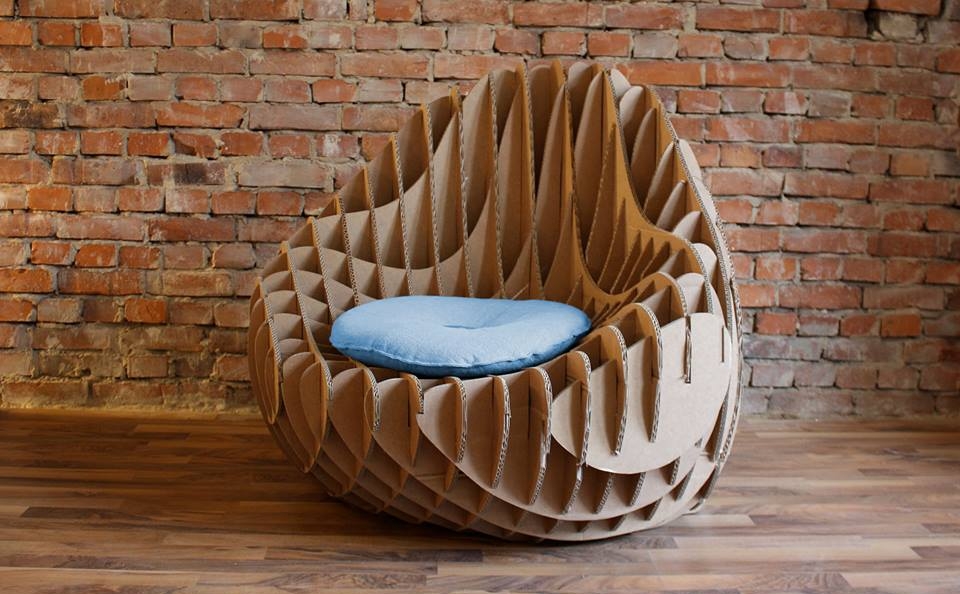
Beyond structural uses, cardboard is increasingly popular in furniture design. Cardboard furniture is durable, lightweight, and easy to manufacture, making it a favorite for eco-conscious interior designers. Companies like Kartell and designers like Frank Gehry have pioneered cardboard furniture that combines both sustainability and aesthetic appeal.
d. Modular Housing
Cardboard can also be integrated into modular housing solutions. The use of prefabricated cardboard modules offers a low-cost, low-impact method of providing housing in regions where materials and labor are scarce. Some companies have developed cardboard-based housing kits that can be easily assembled on-site, with walls and roofs made of specially treated cardboard panels that are both insulating and weather-resistant.5. Benefits and Challenges of Cardboard Architecture
a. Benefits:
- Affordability: Cardboard is incredibly cost-effective compared to materials like wood, concrete, or steel.
- Sustainability: As mentioned, cardboard is a renewable, recyclable, and low-carbon material, making it one of the greenest choices in architecture.
- Ease of Construction: Cardboard is lightweight and easy to handle, making it accessible for a wide range of projects, from community builds to high-end design installations.
- Customization: Cardboard can be easily shaped, cut, and manipulated into various forms, allowing for flexibility in design. It can be painted, treated, or laminated for aesthetic or functional purposes.
b. Challenges:
- Durability: While cardboard can be treated to withstand water, fire, and other elements, it generally lacks the long-term durability of traditional building materials. This limits its use for permanent structures in areas with harsh climates.
- Structural Limitations: Cardboard has certain structural limitations in load-bearing capacities. It needs to be reinforced, often with other materials, for larger or multi-story structures.
Future of Cardboard Architecture
As the demand for sustainable, affordable housing and construction materials grows, so does the potential for cardboard in architecture. Research continues into ways of improving cardboard’s durability, resistance to weather, and structural capacity, which could see it being used in more permanent buildings in the future. Additionally, with the ongoing focus on circular economies and low-waste design, cardboard is likely to remain a material of interest for architects looking to innovate in the field of eco-friendly construction.
The University of Chongqing students’s cardboard houses demonstrate that cardboard can be a viable, sustainable building material when approached creatively. Architects like Shigeru Ban and Frank Gehry have already shown that cardboard has a place in innovative architecture, whether for temporary structures or furniture design. As the world shifts toward more sustainable building practices, materials like cardboard will continue to play a significant role in shaping eco-friendly, low-cost architecture.
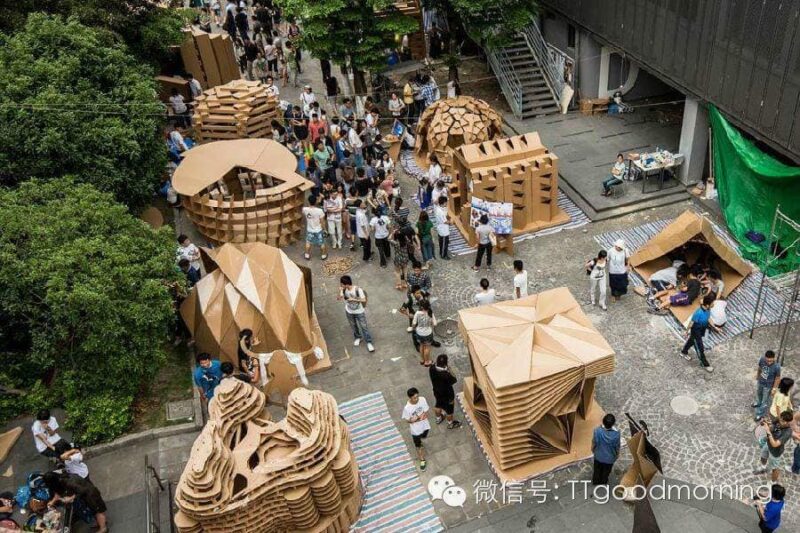
By reimagining how materials like cardboard are used, architects are pushing the boundaries of design and sustainability, showing that even something as simple as cardboard can be transformed into innovative, functional architecture.


